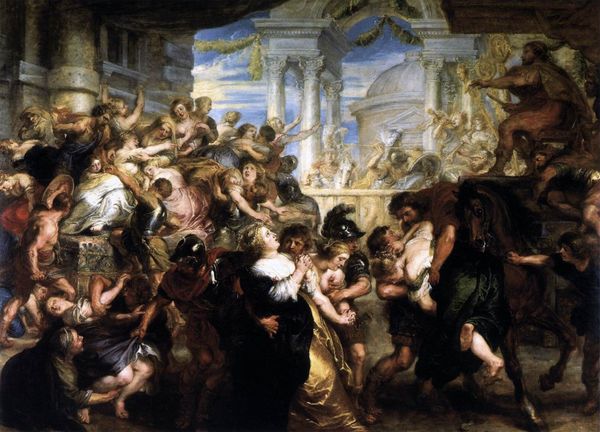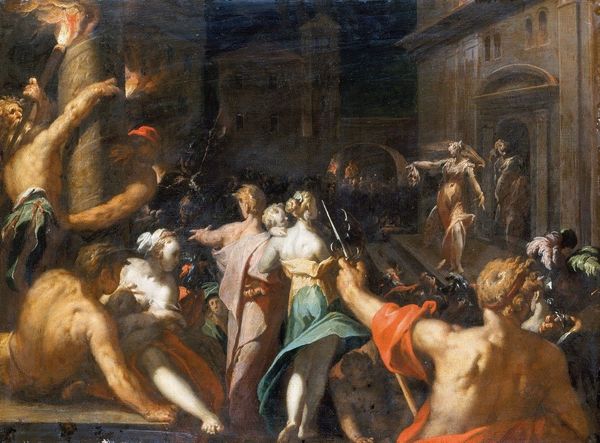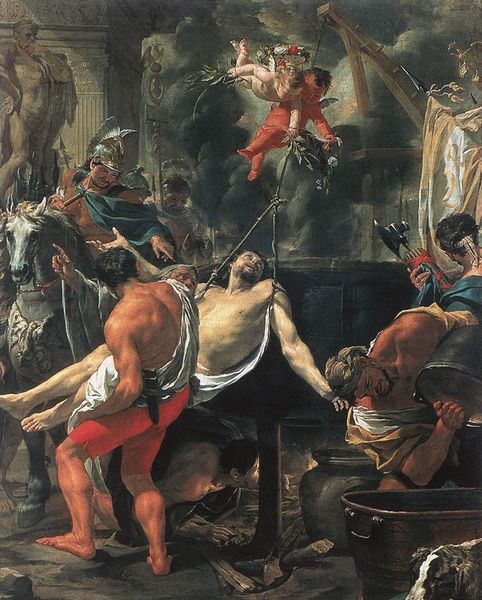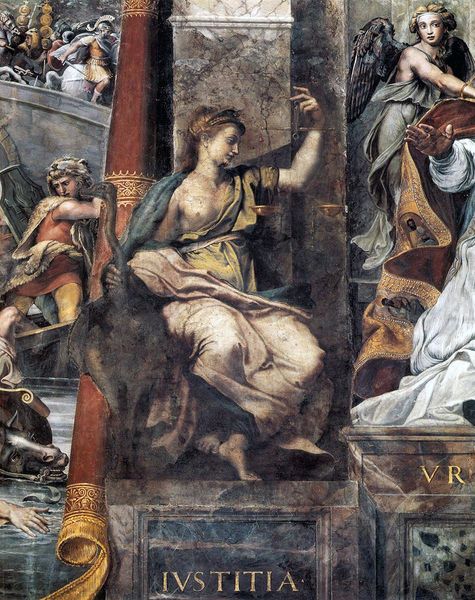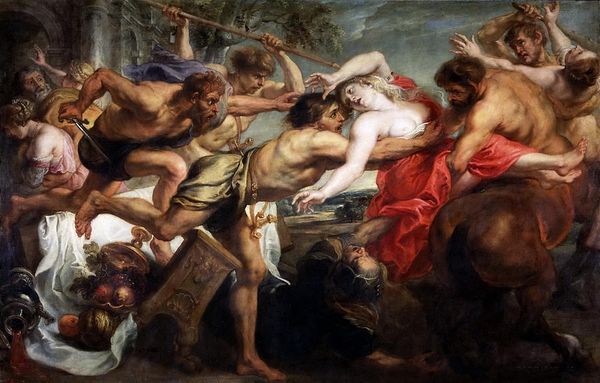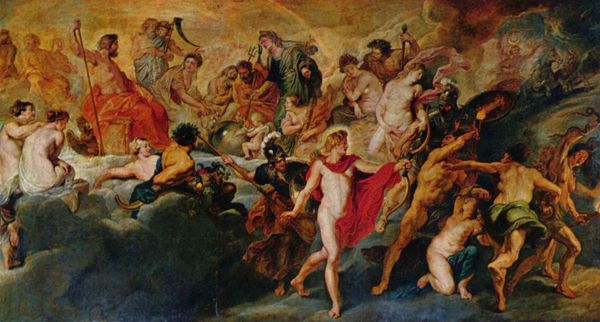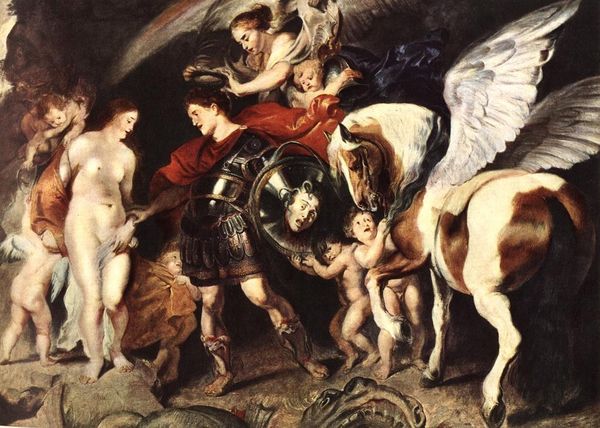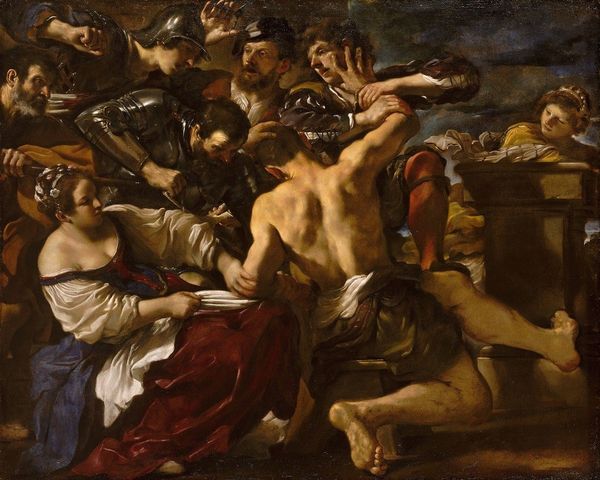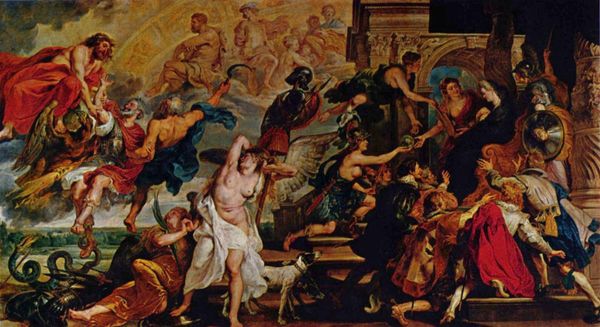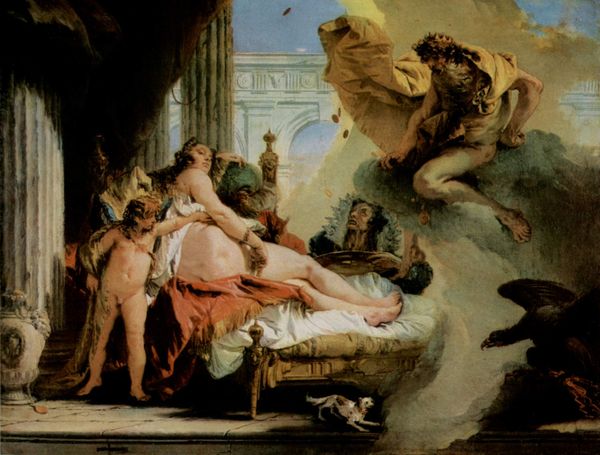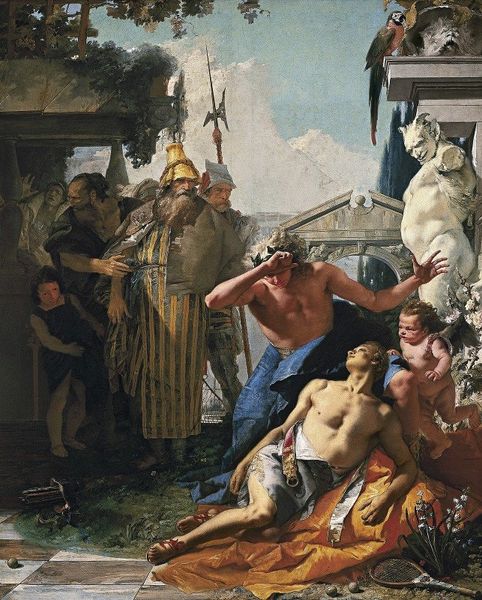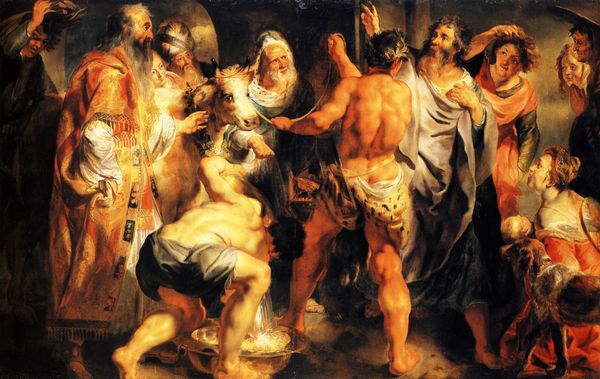
painting, oil-paint
#
narrative-art
#
baroque
#
painting
#
oil-paint
#
figuration
#
oil painting
#
mythology
#
history-painting
Dimensions: 380 x 253 cm
Copyright: Public domain
Curator: Wow, it's chaos, a maelstrom of motion and emotion. And a very *human* story amidst it all. Editor: Indeed. Here we have Peter Paul Rubens' "Martyrdom of St. Thomas," painted in 1639. This oil painting, now residing at the National Gallery in Prague, depicts, quite dramatically, the death of Saint Thomas. Curator: Death always had such an appealing visuality to me. The way Rubens has positioned the figures feels, almost unsettling in their natural forms of violence; muscles rippling, arms raised ready for more, and it feels so immediate, so visceral. Is that even possible in that medium, and period? Editor: Absolutely, the Baroque aesthetic favored drama and intensity. Look at how Rubens uses the diagonals in the composition—the descending angels contrasted against the rising arms of the executioners. He creates tension and visual dynamism, inviting the viewer's gaze to jump around the picture plane in a structured, rather than disorienting manner. It is very theatrical. Curator: The light, too—bathing the figures in this golden glow as if from the heavens! Yet also giving them weight, anchoring them. It gives you such a specific moment in time and feeling. It also feels intentional. I like that there's this dark moodiness from those murdering figures juxtaposed with the angelic figures—like death is like a passage to a dream and nothing more. Editor: And those putti fluttering above aren’t just decoration; they symbolize divine intervention, yet they don't stop the act of martyrdom. Note how the materiality of the painting also works. The roughness of the brushstrokes emphasizes the harsh reality of the scene and offers the Baroque influence, something that other forms of artistic depictions lacked in those periods. Curator: Yeah, something very intentional about those artistic choices of style; I think, this piece definitely takes it’s period into account with these details. What stays with me most, though, is how the whole scene hums with an energy I find hard to articulate... like a raw wound exposed. It feels so human to make such beauty out of death. Editor: Perhaps that's because, as formalism dictates, form carries content and that creates an immediate, universal human message to viewers regardless of their individualities or culture. "Martyrdom of St. Thomas," thus is as beautiful as it is brutal. The balance achieved makes its presence here undeniably warranted.
Comments
No comments
Be the first to comment and join the conversation on the ultimate creative platform.
